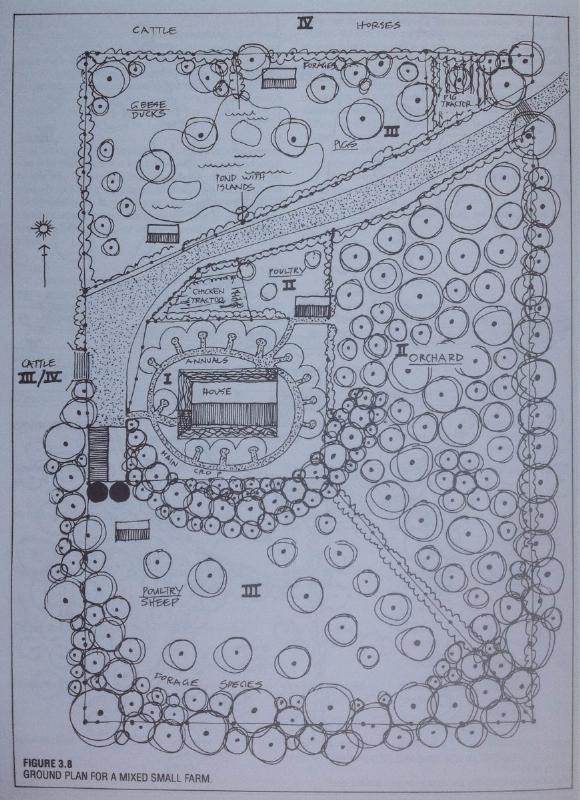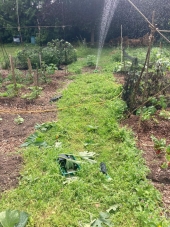
 9
9




Moderator, Treatment Free Beekeepers group on Facebook.
https://www.facebook.com/groups/treatmentfreebeekeepers/





 1
1




"People may doubt what you say, but they will believe what you do."
 1
1








Todd Parr wrote:I'm finding some of those same issues here. Unless you mulch 18 inches deep here, the quack grass invades from all sides and will overrun a garden in a summer, two at the most. Even my perennial areas are constantly being overrun by quack. My entire strawberry patch is so overrun with it that I'm going to kill it off and start over. My asparagus is the same. My little food forest area is constantly under attack from quack. Meanwhile my father starts new garden areas with Roundup, tills his garden every year, and uses commercial fertilizer and his production is great. Meanwhile I have shoveled, hauled, unloaded and wheel-barrowed about 200 pickups loads of mulch, only for it to be invaded again in no time. It seems an uphill battle sometimes.
Moderator, Treatment Free Beekeepers group on Facebook.
https://www.facebook.com/groups/treatmentfreebeekeepers/









Dale Hodgins wrote:
If every weed were gone, how badly infested would your garden be at the end of a growing season?
"People may doubt what you say, but they will believe what you do."




Dale Hodgins wrote:
If every weed were gone, how badly infested would your garden be at the end of a growing season?
Moderator, Treatment Free Beekeepers group on Facebook.
https://www.facebook.com/groups/treatmentfreebeekeepers/









 10
10




Don't let perfect be the enemy of good.
 2
2




Moderator, Treatment Free Beekeepers group on Facebook.
https://www.facebook.com/groups/treatmentfreebeekeepers/









K Putnam wrote:
However, I regret digging swales. I think a rainwater catchment system is going to be more appropriate for water management in my area than swales. Right now, swales are just drowning my plants and trees instead of "storing" water. It turns out to be a bad design feature for my area. Pretty sure a swale killed off a perfectly healthy plum tree this spring. (sigh) In a drier climate, I'd probably go back to swales.
Moderator, Treatment Free Beekeepers group on Facebook.
https://www.facebook.com/groups/treatmentfreebeekeepers/









 1
1





Idle dreamer




Tyler Ludens wrote: Mollison writes about and illustrates the idea of zones, but it took me years and years to finally implement the ideas in any meaningful way.
 I worked on that very thing yesterday, building a small garden area right next to my house. I'm kind of starting over in that regard, but I do have a good start on some of the areas farther out.
I worked on that very thing yesterday, building a small garden area right next to my house. I'm kind of starting over in that regard, but I do have a good start on some of the areas farther out."People may doubt what you say, but they will believe what you do."




Idle dreamer




Count me in as another person that didn't start in zone 1. It seems more like I started everywhere else
I think I had a vision of some naturalistic paradise. And some folks seem to be able to do that - geoff lawton, for instance, doesn't seem to have any fencing except for the domestic animals - his food forests are just out there in the world. Try to do that here and everything would be eaten down in one night.
Don't let perfect be the enemy of good.
 5
5





Trying to achieve self-reliance on a tiny suburban plot: http://gardenofgaladriel.blogspot.com




Galadriel Freden wrote:
I guess what I'm trying to say is that I think you are still doing permaculture
 3
3




Moderator, Treatment Free Beekeepers group on Facebook.
https://www.facebook.com/groups/treatmentfreebeekeepers/





 1
1




 1
1




Don't let perfect be the enemy of good.

 1
1








"People may doubt what you say, but they will believe what you do."

 1
1




List of Bryant RedHawk's Epic Soil Series Threads We love visitors, that's why we live in a secluded cabin deep in the woods. "Buzzard's Roost (Asnikiye Heca) Farm." Promoting permaculture to save our planet.
 4
4




Bryant RedHawk wrote:Location is probably the most critical factor when it comes to designing, then it would be what do you want in the order of food plants, then it becomes a matter of adjusting to 1. the location, 2. the environment being dealt with, 3. soil conditions.
So if you want to be "food Independent" you will need to be able to grow a very wide variety of plants, animals, trees, etc. There are not many locations that this can be done without some manipulations.
My online educational sites:
https://www.pinterest.ca/joelbc/homestead-methods-tools-equipment/
https://www.pinterest.ca/joelbc/mixed-shops/
 2
2




Earthworks are the skeleton; the plants and animals flesh out the design.
 3
3




G Freden wrote:
I'm basing my general method on John Seymour's, in The Complete Book of Self sufficiency. Not a permaculture book, but I'm finding his methods mostly permie-friendly.
 1
1




K Putnam wrote:I am continually reminded that permaculture is about designing a system for your particular location.
... It is all about design and, unfortunately, that takes observation and time and probably some mistakes and endless shifting along the way.

 1
1




Some places need to be wild












 5
5




List of Bryant RedHawk's Epic Soil Series Threads We love visitors, that's why we live in a secluded cabin deep in the woods. "Buzzard's Roost (Asnikiye Heca) Farm." Promoting permaculture to save our planet.










 4
4




Some places need to be wild
 3
3




Again it's site specific. That's a great deal of water used for a very transient purpose. I do use water in my greenhouse, but in a desert climate rocks would probably serve a similar purpose. It depends on what you have in abundance and how much work you're willing to do.Eric Hanson wrote:On a similar note, I have filled a 30 gallon black plastic garbage bag with about 10 gallons of water and left it in the middle of my tomato patch in the morning before heading to work. The water soaked up sunlight all day and got quite warm. That night the temperature dropped below freezing and the following morning the whole world was white with frost except my tomato patch which stayed above freezing all night.
New location. Zone 6b, acid soil, 30+ inches of water per year.
https://growingmodernlandraces.thinkific.com/?ref=b1de16
Growingmodernlandraces.com affiliate










 3
3




Some places need to be wild
 1
1




G Freden wrote:
I'm basing my general method on John Seymour's, in The Complete Book of Self sufficiency. Not a permaculture book, but I'm finding his methods mostly permie-friendly.










 2
2




Some places need to be wild
 2
2




"Also, just as you want men to do to you, do the same way to them" (Luke 6:31)

|
Thank you my well lotioned goddess! Here, have my favorite tiny ad!
The new gardening playing cards kickstarter is now live!
https://www.kickstarter.com/projects/paulwheaton/garden-cards
|







